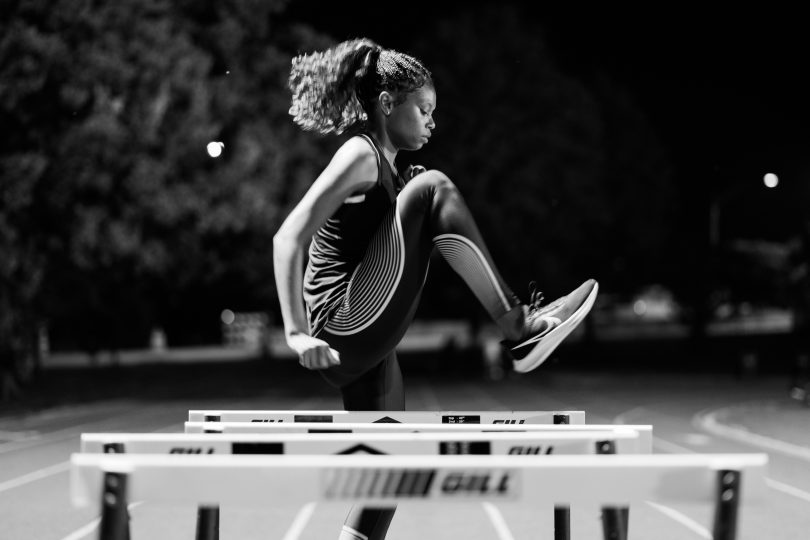When we watch elite athletes perform on the field, court, or track, their agility seems almost superhuman. Every swift turn, explosive jump, and lightning-fast reaction leaves spectators in awe. But beneath the surface of these incredible feats lies a fascinating blend of physiology, biomechanics, and psychology — the true science behind their movement mastery. Just as lương sơn tv brings live action to fans around the world, science brings clarity to what makes these athletes move with such precision and power.
The Role of Biomechanics in Enhancing Athletic Agility
Agility begins with movement mechanics — the art and science of how the body moves. Biomechanics focuses on how muscles, bones, tendons, and joints work together to produce fast and efficient motion. For elite sports players, understanding and optimizing these mechanics can make all the difference between good and exceptional performance.
- Balance and Coordination: Athletes must maintain their center of gravity during complex movements. This allows them to stay stable even when changing direction at high speed.
- Joint Mobility: Flexible joints, particularly in the hips and ankles, allow smoother and quicker transitions during sprints or dodges.
- Force Generation: Muscles in the legs and core work together to generate powerful bursts of speed and quick stops.
- Energy Efficiency: Proper technique minimizes wasted motion, allowing athletes to move faster with less effort.
Sports scientists use video analysis and motion capture systems to study these elements, refining training programs that enhance agility without compromising stability or safety.
The Importance of Neuromuscular Coordination
Agility is not just about muscles — it’s also about how the brain communicates with the body. Neuromuscular coordination refers to the seamless connection between the nervous system and muscle activity. The faster and more precise these signals are, the quicker an athlete can react to changing environments on the field.
- Reaction Time: Elite players train their nervous systems to recognize cues (like an opponent’s movement) and react instantly.
- Muscle Memory: Through repetitive practice, the brain learns to automate complex movements, allowing smoother and faster execution.
- Sensory Feedback: The body constantly sends feedback to the brain about balance and position, helping athletes adjust movements mid-action.
Training techniques like ladder drills, cone exercises, and reactive games all aim to enhance neuromuscular coordination — making an athlete’s movements both instinctive and precise.
The Crucial Role of Strength and Conditioning
Behind every agile athlete is a foundation of strength. Strong muscles don’t just produce power; they stabilize joints, protect against injury, and improve control. Conditioning programs are carefully designed to balance power and flexibility, ensuring the body performs efficiently under pressure.
- Lower Body Strength: Exercises like squats, lunges, and plyometric jumps build explosive power for sprints and directional changes.
- Core Stability: A strong core ensures that energy from the legs transfers efficiently through the body, maximizing speed and balance.
- Endurance Training: Long-lasting performance depends on muscle endurance and cardiovascular efficiency.
- Recovery and Flexibility: Stretching and mobility exercises prevent stiffness, allowing smooth movement transitions.
Strength and conditioning are essential in sports like basketball, soccer, and tennis — where athletes must constantly adapt to dynamic play environments.
Cognitive Agility – The Hidden Component of Quick Decisions
Physical quickness is only one side of agility. Mental agility — the ability to think fast, make split-second decisions, and anticipate the opponent’s next move — is equally vital. Cognitive agility separates good athletes from great ones.
- Pattern Recognition: Elite players can quickly interpret game dynamics and predict where the ball or opponent will move next.
- Situational Awareness: Understanding spatial relationships between teammates, opponents, and the field leads to smarter positioning.
- Stress Response: Maintaining calm under pressure ensures that mental clarity is never lost, even in high-stakes moments.
- Decision Speed: The faster an athlete decides, the quicker their body can react.
Cognitive training methods, including visualization, simulation drills, and virtual-reality programs, are now integral to elite sports preparation, enhancing both mental and physical agility.
Nutrition and Recovery: Fueling the Agile Body
Peak agility demands more than just training; it requires smart fueling and recovery strategies. The body is a machine that needs the right nutrients, hydration, and rest to perform at its best.
- Balanced Diet: Carbohydrates for energy, proteins for muscle repair, and healthy fats for endurance are all essential.
- Hydration: Dehydration slows reaction times and reduces coordination.
- Sleep: Quality rest is when the body repairs itself, consolidating muscle memory and neural connections.
- Active Recovery: Techniques such as yoga, foam rolling, and low-intensity workouts keep muscles supple and responsive.
Athletes who neglect nutrition and recovery often experience fatigue, slower reflexes, and higher injury risks — all enemies of elite-level agility.
Technology and Performance Tracking for Elite Athletes
Modern sports science has evolved far beyond traditional coaching methods. Technology now plays a central role in measuring, analyzing, and improving agility performance. Platforms like luongsontv60com showcase how real-time analytics and digital insights are transforming the way we understand athletic performance.
- Wearable Sensors: Devices track heart rate, acceleration, and muscle activity to optimize training loads.
- Motion Capture Systems: High-speed cameras record movements to identify inefficiencies and suggest improvements.
- AI and Data Analysis: Algorithms process performance metrics, predicting fatigue and preventing overtraining.
- Virtual Coaching Tools: Remote trainers can provide feedback instantly, helping athletes refine techniques faster than ever.
With continuous innovation, technology bridges the gap between science and sports — empowering players to push the boundaries of human agility.
Psychological Resilience and Its Connection to Physical Agility
Agility also depends heavily on an athlete’s psychological resilience. The mind influences how the body performs under stress, fatigue, or competition pressure. Elite athletes often undergo mental conditioning to strengthen this critical link.
- Focus and Mindfulness: Concentration exercises help athletes stay in the moment and execute movements with precision.
- Confidence Building: A positive mindset enhances reaction speed and body control.
- Emotional Regulation: Staying composed prevents hesitation and promotes consistent performance.
- Visualization Techniques: Mentally rehearsing complex moves strengthens neural connections and prepares the body for real action.
Psychological training helps maintain peak agility even when the odds are high or exhaustion sets in — proving that the brain is just as vital as the body in elite sports.
The Fascinating Connection Between Science, Training, and Human Potential – A Broader Look at the Conclusion
In conclusion, the agility of elite sports players is far more than natural talent — it is the result of scientific precision, disciplined training, and advanced technology working in harmony. From biomechanics and neuromuscular coordination to mental resilience and nutritional balance, every component plays a vital role in shaping a top-tier athlete. These players are living proof of how human potential can be maximized when science meets passion.
Agility is not just about moving fast; it’s about moving smart, adapting instantly, and performing with both body and mind in perfect sync. As research and innovation continue to evolve, we can expect future generations of athletes to reach even greater levels of speed, precision, and control. The science behind agility reminds us that excellence isn’t an accident — it’s engineered through dedication, intelligence, and the relentless pursuit of improvement.








